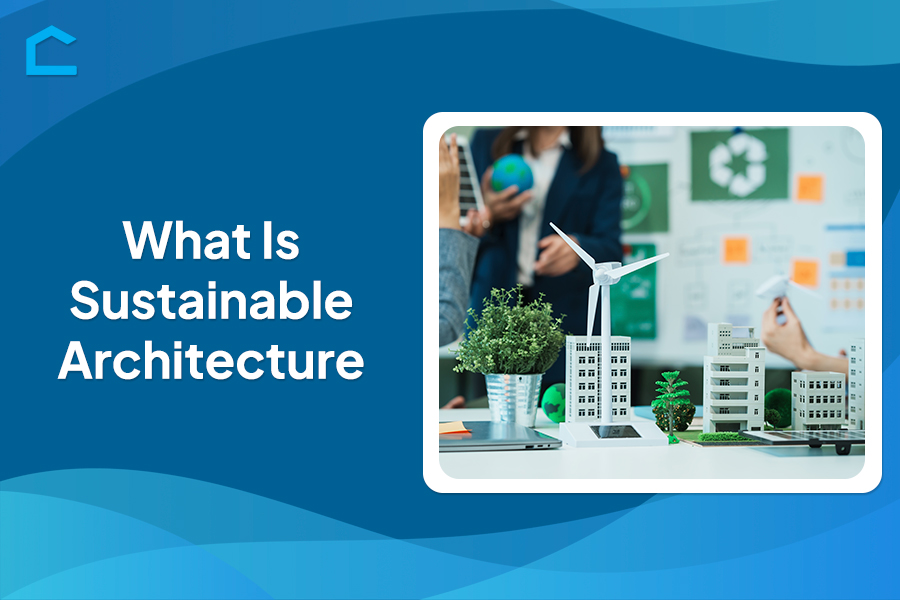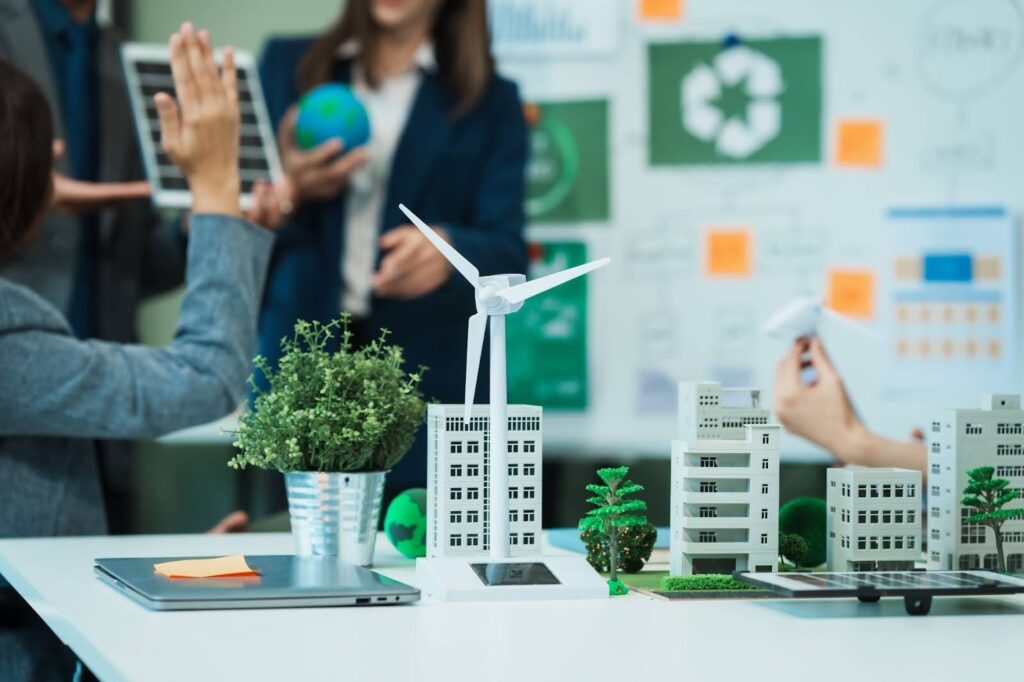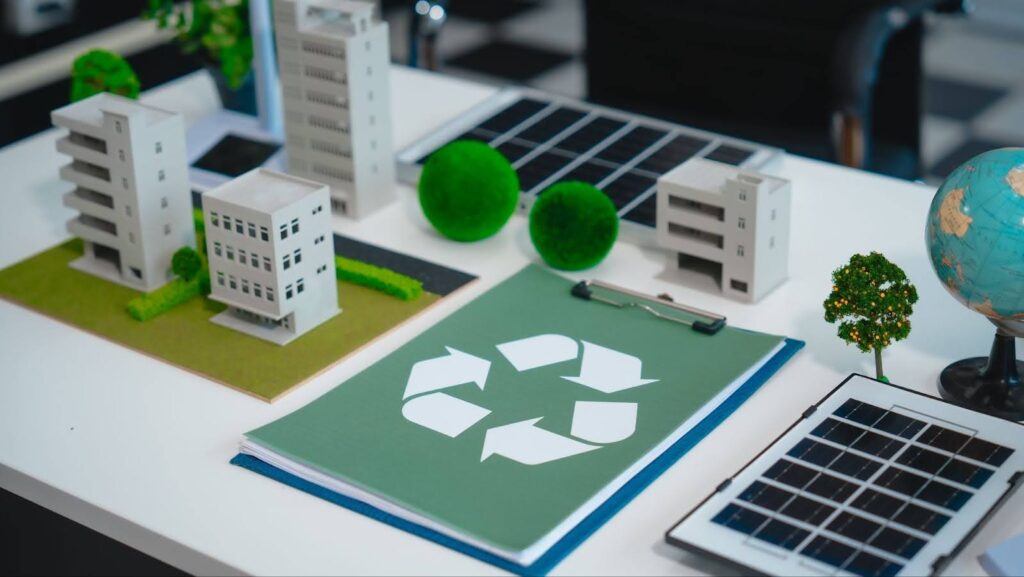What Is Sustainable Architecture?

Architecture is an important discipline responsible for the safe and efficient design and construction of buildings. With the rise in environmental consciousness, this field of work has also adopted numerous eco-friendly practices to keep up with the latest trends. That’s why, in this article, we’ll elaborate on what is sustainable architecture and its key practices.
By defining the principles of such architecture, you’ll get a clear insight into what it focuses on and how it manages to make buildings more efficient than they already are. We’ll explain the various certificates associated with green building and the benefits expected from reducing the environmental impact. Continue reading to discover what is green architecture and how it affects our environment!

What Is Sustainable Architecture?
Sustainable architecture is a design approach that focuses on minimizing the environmental impact of buildings. This is achieved by incorporating eco-friendly materials, energy efficiency, and reducing the carbon footprint throughout the building’s lifecycle. Sustainable architecture seeks to create structures that are both functional and environmentally responsible, aligning with the principles of environmental conservation and sustainability.
Since these eco-friendly methods are present throughout the building’s materials, construction methods, and resource use, they aim to create healthy living environments that meet the needs of present and future generations. By implementing various technological advancements within the constructions, sustainable architecture focuses on aesthetically pleasing buildings that drastically minimize the harmful effects on the ecosystem.
What Is Green Architecture
Green architecture and sustainable architecture are closely related, as both focus on minimizing environmental harm and creating resource-efficient and healthy spaces. However, while sustainable architecture is responsible for the environmental impact across the building’s entire lifecycle, green architecture highlights the use of eco-friendly materials, installing energy-efficient systems, and utilizing designs that maximize natural light and ventilation.
Another key difference between green and sustainable architecture is that the latter must also be mindful of the social and economic impacts of the construction to ensure they create spaces that benefit both the people and the planet in the long run. As many consider green architecture as a subsection of sustainable architecture, it emphasizes the use of sustainable materials, energy efficiency, and resource conservation to create environmentally responsible structures.
Principles of Sustainable Architecture
Now that you’ve grasped the basics behind sustainable architecture, we want to highlight some of the most important matters it targets. As mentioned, sustainable architecture is based on several key principles, which are as follows:
- Energy efficiency– reducing energy consumption through the use of renewable energy sources like solar or wind power and maximizing natural light and ventilation. Sustainable architecture also advocates for energy efficient lighting and appliances through the use of LED lighting and installing intelligent energy management systems.
- Resource conservation– using eco-friendly, renewable, or recycled materials in construction to reduce waste and environmental impact. By minimizing the use of non-renewable resources, sustainable architecture not only reduces the overall material consumption but also ensures the building continues operating in the long run due to durable resources.
- Low environmental impact– minimizing the building’s carbon footprint through eco-friendly practices and materials. Not only does sustainable architecture aim to reduce pollution and emissions, but it also aims to support local ecosystems.
Eco-Friendly Building Materials
As mentioned, one of the main components of sustainable architecture is the use of environmentally friendly materials. Not only do such resources reduce the building’s environmental impact, but they’re also praised for their functionality. Some of the most commonly used eco-friendly material options are the following:
- Recycled or reclaimed materials– instead of producing new materials, sustainable architecture often utilizes leftover resources from existing buildings to reduce waste and environmental impact. By repurposing raw materials such as wood, recycled metals, glass, concrete, and plastic, architects can drastically reduce the carbon footprint and add a unique industrial or rustic character to buildings.
- Locally sourced materials– instead of opting for long-distance transportation that increases fuel consumption and greenhouse gas emissions, sustainable architecture aims to support local businesses and ensure durability by using locally sourced materials that can better adapt to the climate and environmental conditions of the area.
- Sustainable woods– sustainable architecture also uses woods from fast-growing species, such as bamboo and cork, to support responsible forest management.
Energy Efficiency and Renewable Energy
Sustainable architecture emphasizes reducing energy use by incorporating renewable energy systems like solar panels, wind turbines, or geothermal heating. In addition, architects design buildings that make the most of natural light and insulation, reducing the need for artificial lighting, heating, and cooling to a minimum. By implementing efficient insulation in walls, roofs, and windows, the indoor temperatures are kept stable, making the building more efficient year-round.
Water Conservation
Sustainable designs often include systems that help conserve water, such as rainwater harvesting, greywater recycling, and water-efficient fixtures. These systems reduce water waste and the building’s overall demand for local water resources. Furthermore, many sustainable buildings utilize water monitoring and control systems to track water consumption in real-time.
Green Building Certifications
Another important aspect of sustainable architecture is the green building certification. Many sustainable architecture projects seek certification from recognized environmental standards, such as:
- LEED (Leadership in Energy and Environmental Design, a globally recognized certification for sustainable buildings that applies to commercial, residential, and industrial constructions.
- BREEAM (Building Research Establishment Environmental Assessment Method), a widely used environmental assessment method. These certifications assess a building’s performance in areas such as energy use, water management, and materials sourcing.
- WELL Building Standard promotes buildings designed to enhance physical and mental well-being through a healthier indoor environment.
Benefits of Sustainable Architecture
Lastly, we want to highlight the advantages of implementing some of the mentioned green architecture practices within any construction project. Sustainable architecture not only reduces the environmental impact but also provides several long-term benefits, such as:
- Lower operating costs
- Healthier living environments
- Reduced environmental footprint

Conclusion
After taking the time to discover what is sustainable architecture, it’s safe to say that this practice holds great importance in this day and age. With the rise in environmental consciousness, more people than ever opt for environmentally friendly constructions that not only reduce the carbon footprint but also ensure long-lasting durability. By focusing on energy efficiency, resource conservation, and reducing the environmental impact, sustainable architecture utilizes the latest technology and eco-friendly methods to support local ecosystems.
Lastly, if you need a reliable architect for your next project, explore what we at Services Curated offer. With our high-quality verification services, we make interactions between businesses, professionals, and consumers transparent and secure. So, contact us today, and we’ll connect you with the right sustainable architect to meet your unique needs!
